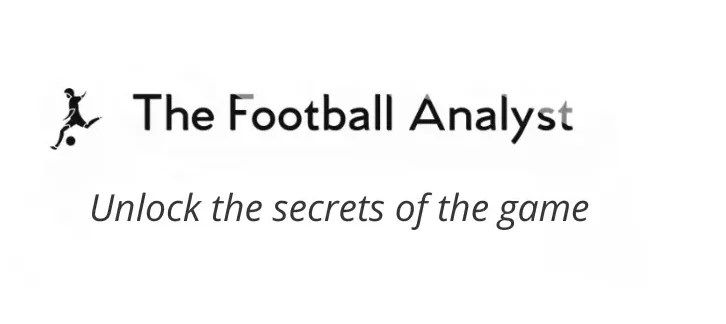In recent years, Burnley has undergone a significant transformation under the leadership of Vincent Kompany. Known for his commanding presence on the pitch as a player, Kompany has seamlessly transitioned into a managerial role, bringing a fresh tactical approach to Burnley’s gameplay. This article delves into a detailed tactical analysis of Burnley under Kompany’s stewardship, exploring the key strategies, formations, and player movements that define their new identity. From defensive solidity to attacking innovation, we uncover how Kompany’s tactical understanding has shaped Burnley’s resurgence in competitive football.
Build-up
Low Build-up
Kompany sets his team up in a 3-4-2-2 formation in the low build-up, with the goalkeeper between the center-backs and two fullbacks higher up. He uses two dropping strikers and looks to attract opposition players to open up the space in behind for the wingers to exploit. The play starts with the center-back passing the ball to the goalkeeper, who can go long towards the attackers or use third-man combinations with the holding midfielders to find the center-backs.
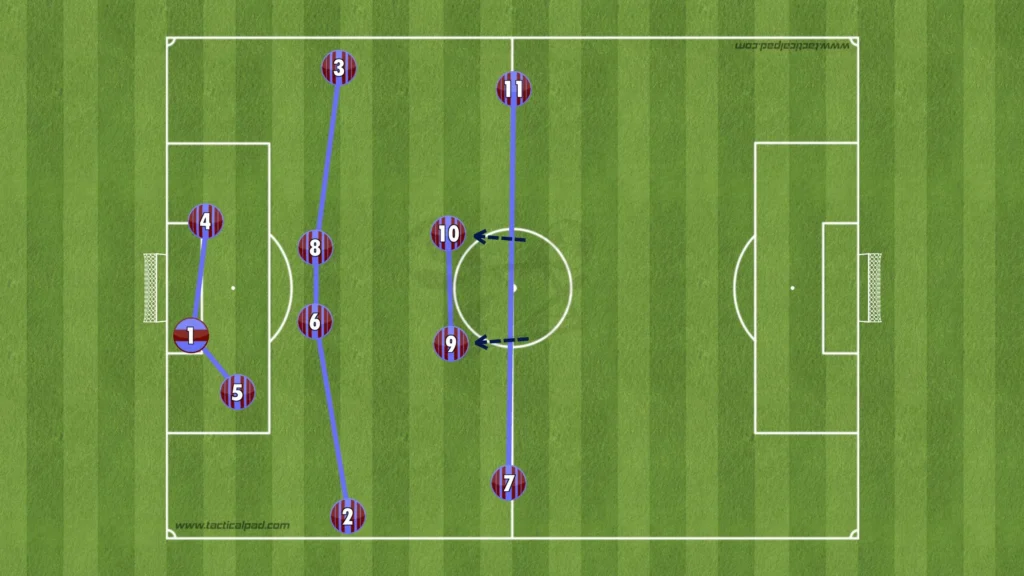
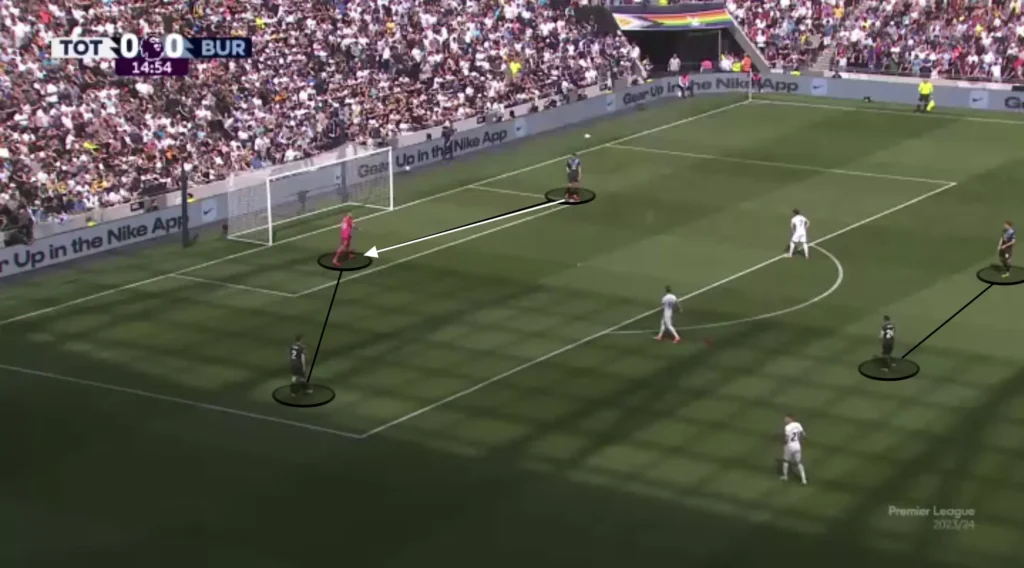
This structure with two dropping strikers and two high wingers, popularized by Roberto De Zerbi, questions the opposition center-backs, forcing them to make difficult decisions. If they push up on the dropping strikers, the space behind them opens up, giving the winger a 1v1 against the fullback. However, if they do not push up on the strikers, a numerical superiority is created in the midfield, allowing Burnley to play through the press.


High Build-up
Vincent Kompany usually sets his team up in a 1-2-3-5 formation in the high build-up, with two center-backs, three holding midfielders, and five up front.
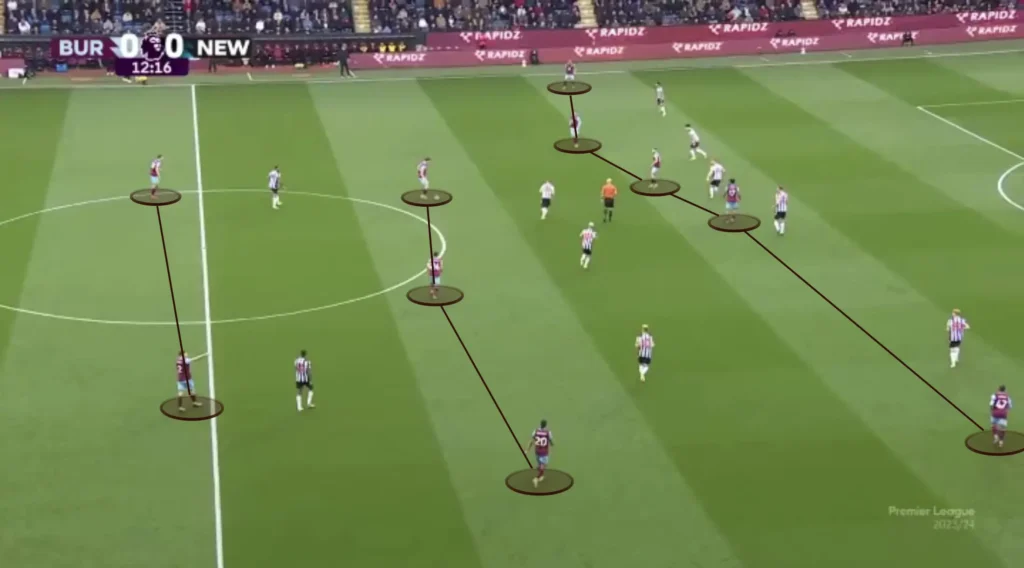
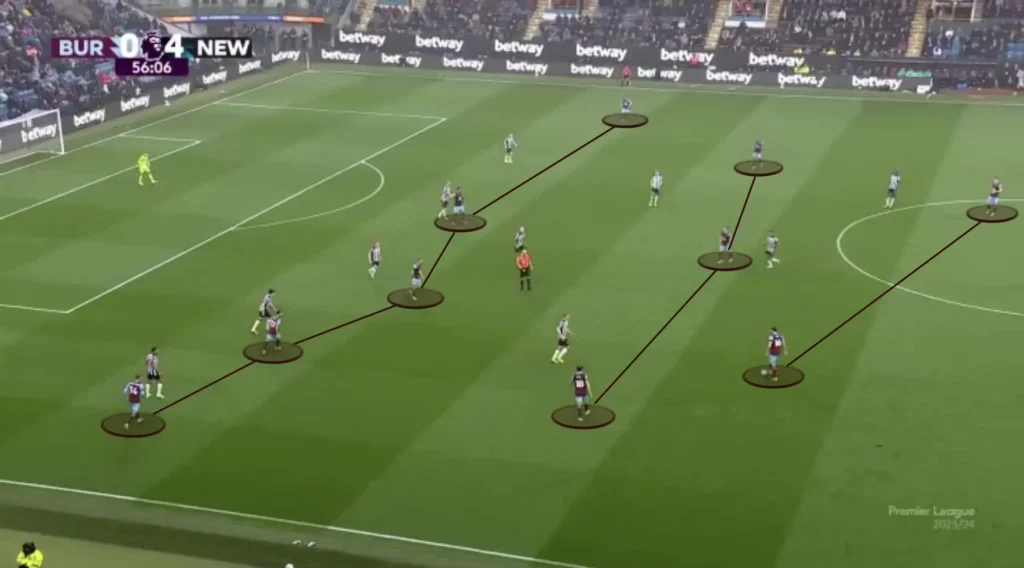
This gives them eight players in the central areas and one on each wing, which creates more options in the center and less space between the players. Kompany likes this because he prioritizes playing through the middle. He needs one player high and wide to pull apart the backline while the rest create numerical advantages in the midfield areas. This builds good conditions in defensive transitions, allowing more players to press when they lose the ball. Another purpose for keeping many players in the middle is to shorten the distance between them. This shortens the length of the passes, which naturally shortens the time between passes. This means the opposition players will have less time to push up and press, giving the Burnley players more time and control.
They get into the formation by pushing one of the fullbacks up as a winger, the winger on the same side into an attacking midfield position, and inverting the other fullback into the holding midfield.
High Backline
A massive aspect of Burnley’s high build-up has been that they keep a high backline. This helps in the counterpress because they get more players closer to the center. Having more players close to the center who can win the ball back makes it difficult for the opposition to do anything when they win possession. Furthermore, the high backline shortens the distance between players, shortening the time and length of the passes and preventing the opposition from pushing up their defense.
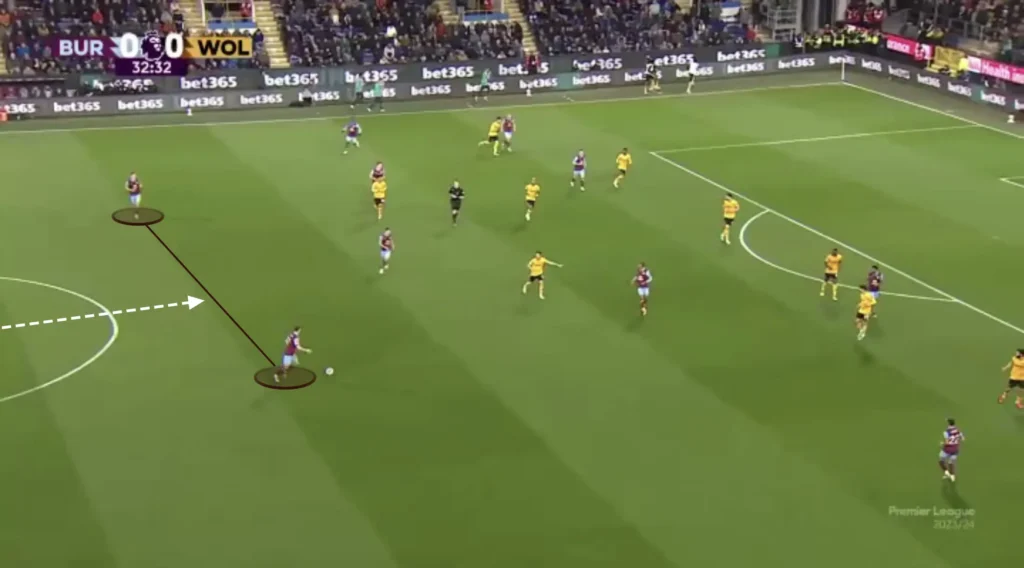
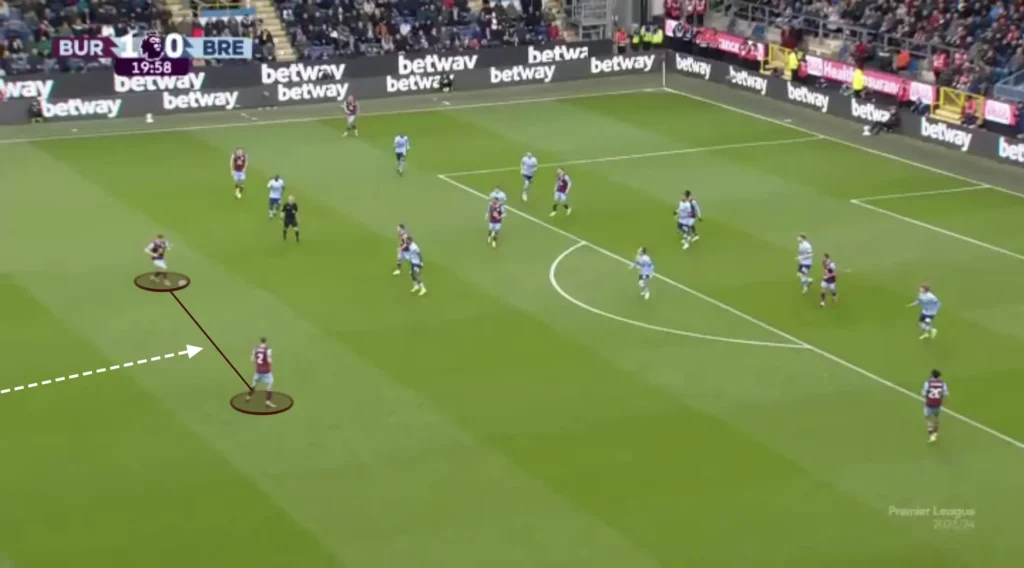
Changing Formation
Kompany’s teams often rotate in the build-up, creating new formations to confuse opponents. They adapt to their opponent’s formation to create numerical advantages in different areas, allowing them to beat the defense and score more goals. Kompany, for example, often uses the 1-2-4-4 formation in the high build-up.
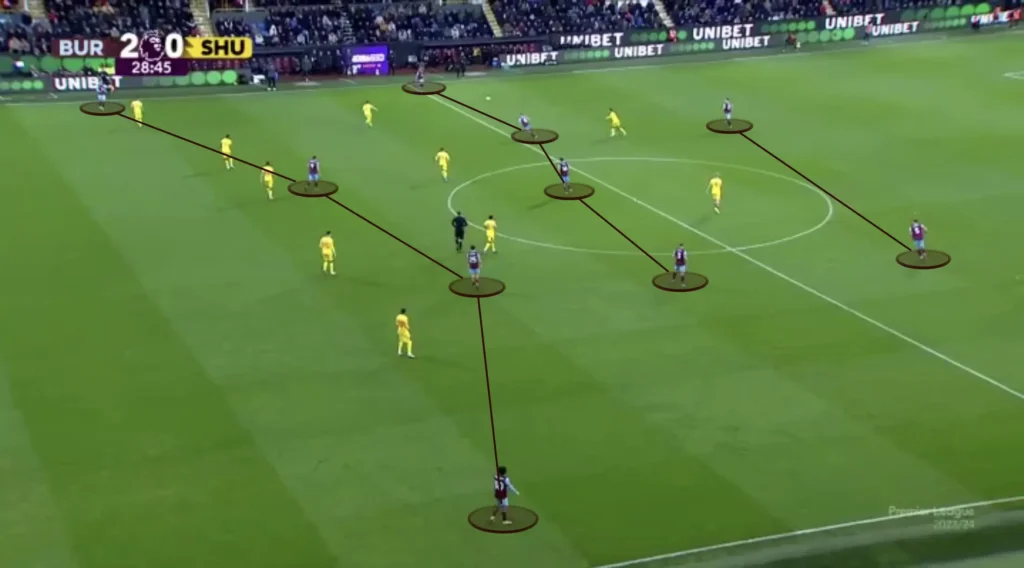
In this formation, they often push both fullbacks up as wingers and the wingers into the middle, creating a 1-2-2-6 formation. When the wingers invert, the opposition fullbacks usually follow, which opens the space out wide for the Burnley fullbacks. Many wingers are not very active when defending and won’t track a run up the pitch from a fullback, which results in the fullback being completely open. The long ball can, therefore, be played from the midfield or backline to the running fullback, who can take the ball forward and create a crossing opportunity.
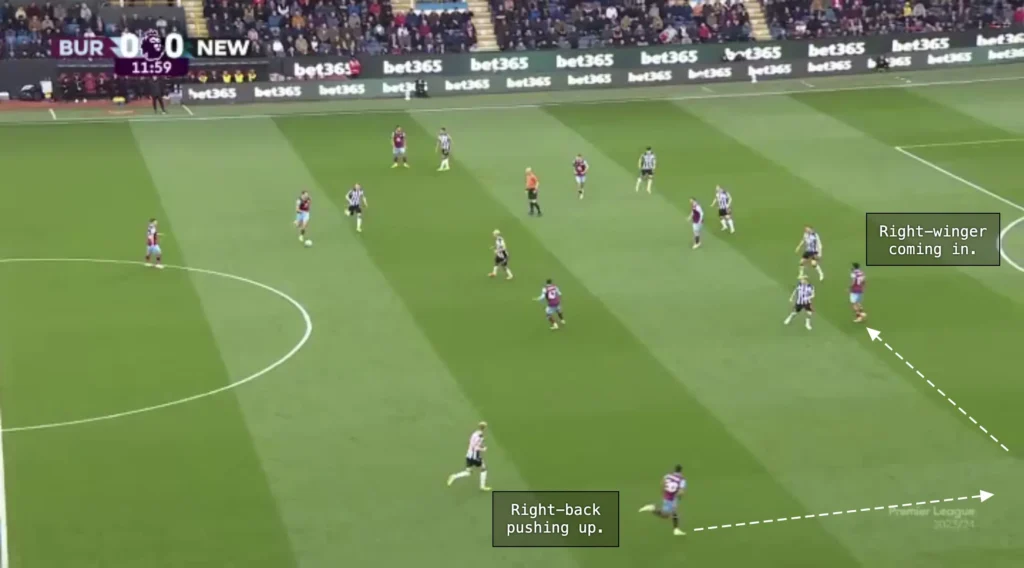
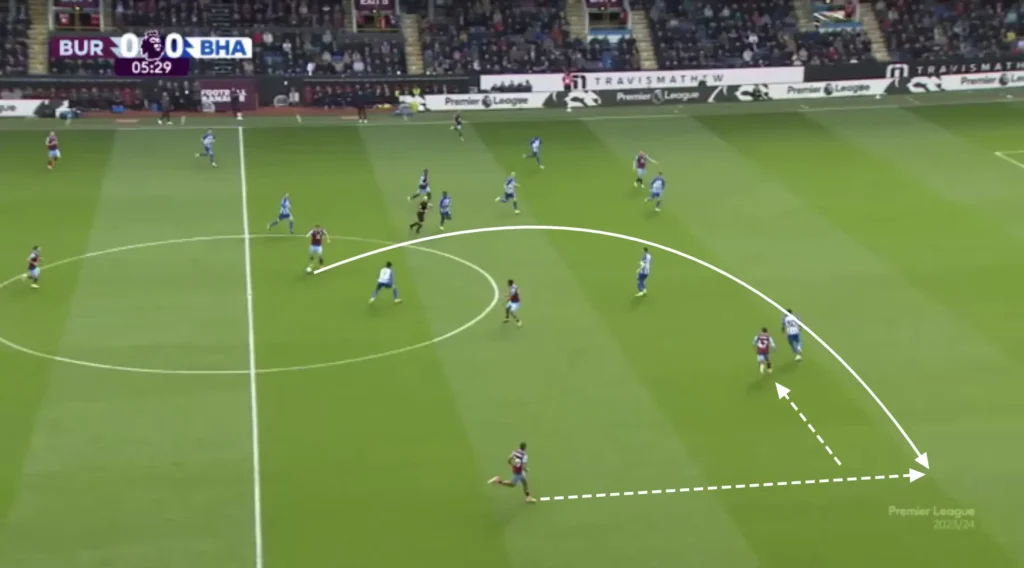
When playing against two forwards, Kompany often drops one of the holding midfielders, creating a back three. This creates a 3v2 with the backline against the opposition’s forwards instead of a 2v2, which means that one defender will be free. This allows them to use the extra player to beat the opposition’s forward line and progress the ball.
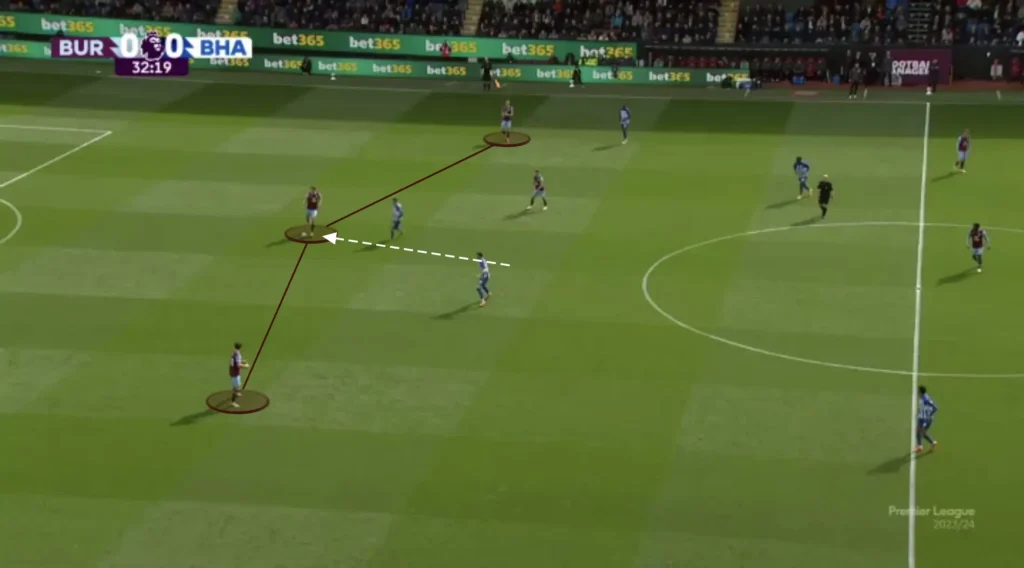
Using the Goalkeeper
Vincent Kompany is a big fan of using the goalkeeper in the build-up. Using the goalkeeper in the build-up phase offers numerous tactical advantages. By involving the goalkeeper, teams can create numerical superiority at the back, making it easier to evade the opponent’s press and maintain possession. This additional player allows for more passing options, reducing the risk of losing possession and enabling smoother transitions from defense to attack. The goalkeeper can also act as a pivot, switching play across the field to exploit weak points in the opposition’s formation. Furthermore, involving the goalkeeper helps in drawing the opposition forward, creating space higher up the pitch for attackers to exploit.
Kompany will often create a back-three by pushing the goalkeeper up between the center-backs. This produces the same numerical superiority against the first line of teams who defend with two forwards. The advantage of this, however, is it creates the same numerical superiority without losing the extra midfielder, allowing Burnley to keep more players higher up the pitch.
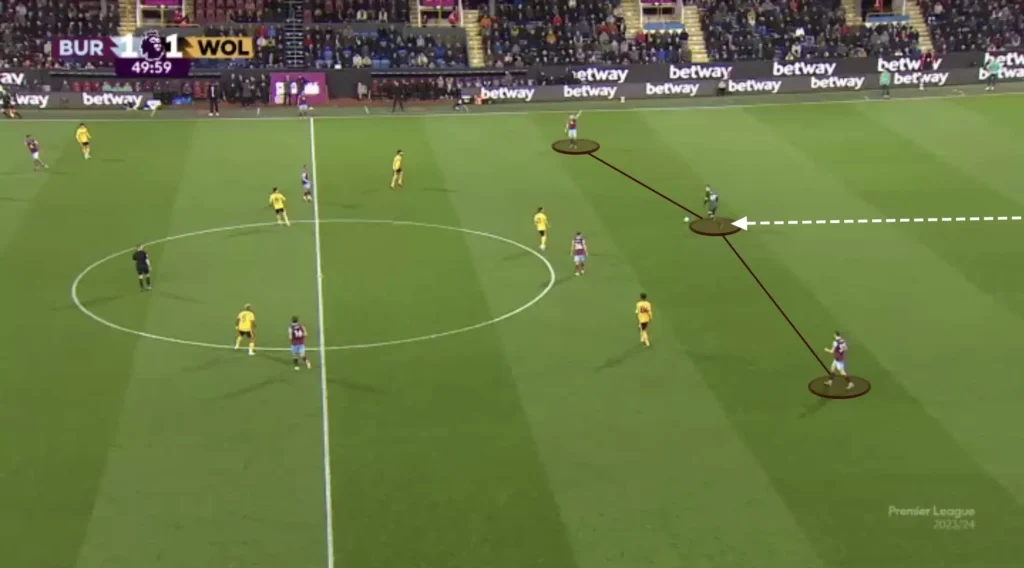
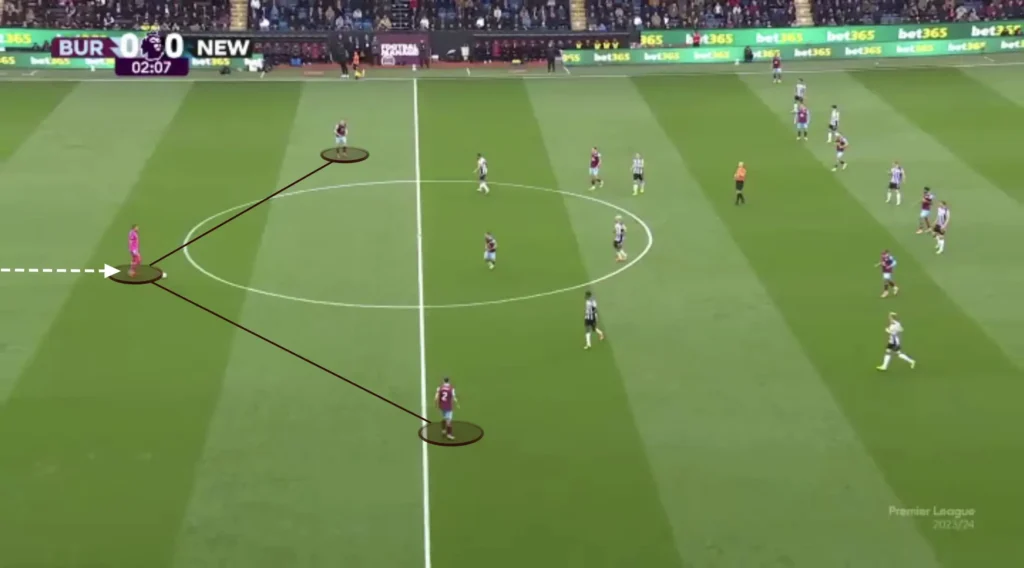
With the goalkeeper pushing up, the center-backs can come wider.
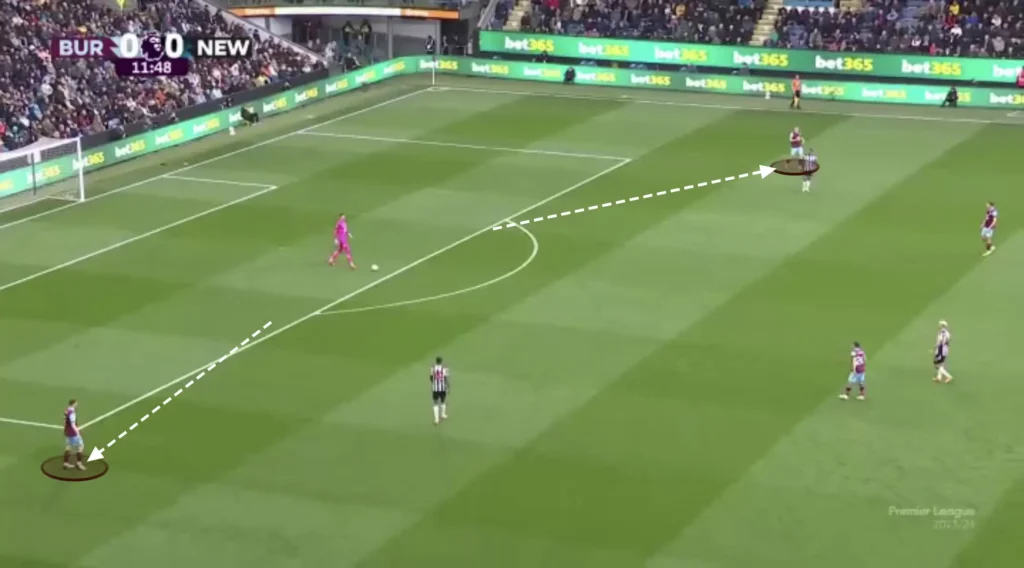
When the center-backs come wider, they can take the ball forward when receiving it to break the opposition’s first line of pressure. This provides a safe and easy way to break the opposition’s first line and progress the ball up the pitch.
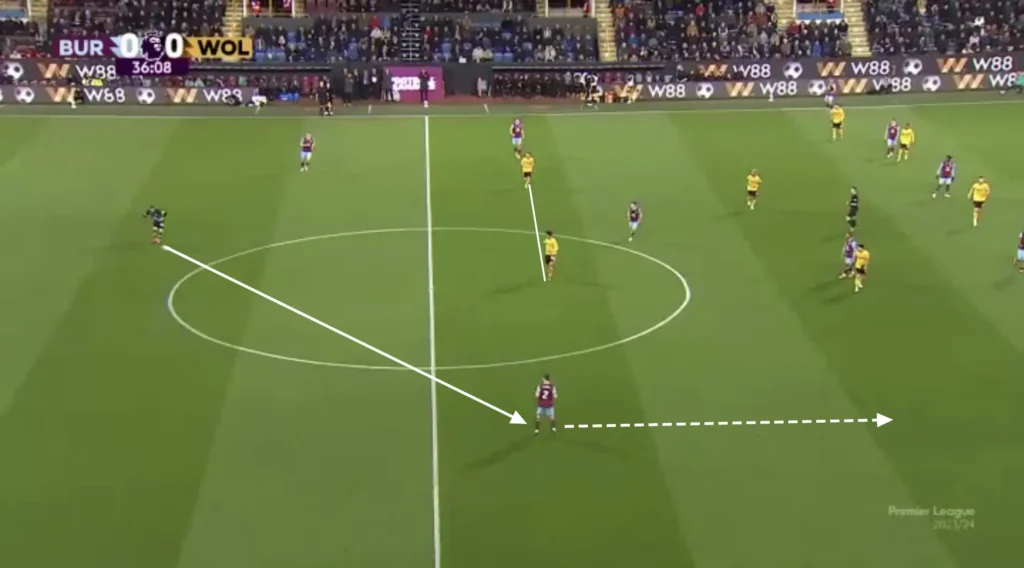
Finding the Pockets
Kompany wants his defenders and midfielders to find the attackers in the pockets between the opposition’s midfield and backline. The strikers and wingers will often drop into these spaces and receive a pass from the back or the wing, breaking the lines of the opposition. The other attackers will pin the backline, not allowing them to push up on the dropping Burnley player, which gives him the time and space to turn and drive at the defense.
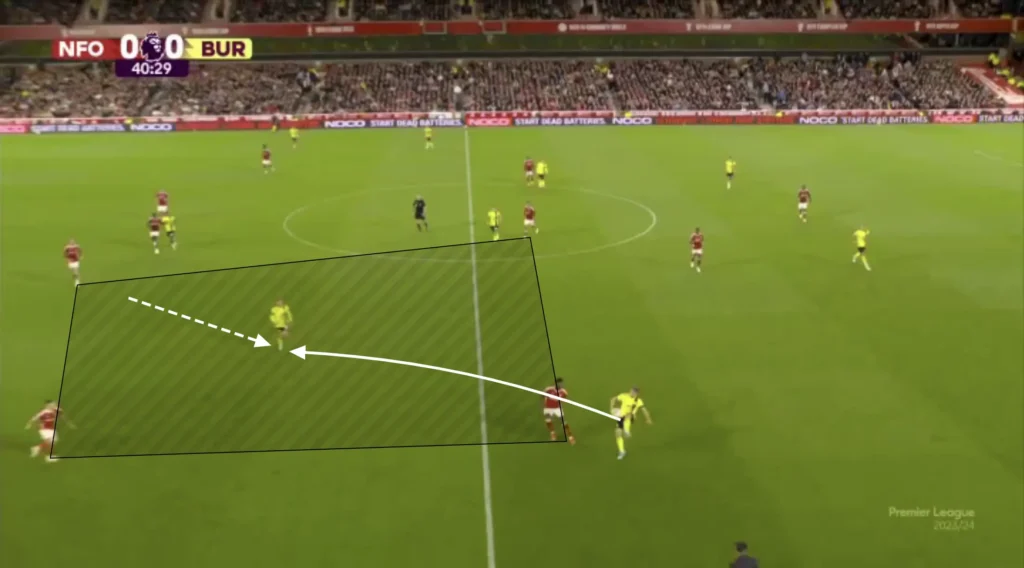
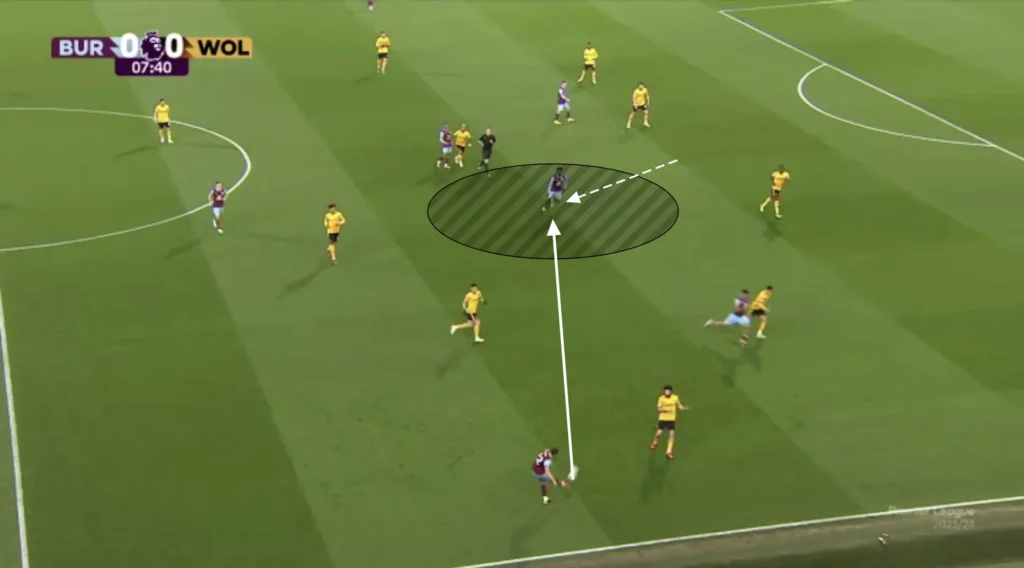
Numerical Advantages
Another massive aspect of Burnley’s high build-up is their ability to create numerical advantages against the opposition’s defensive line. When playing with a 1-2-3-5 formation, their front five naturally becomes numerically superior against a back four, which they are great at taking advantage of.
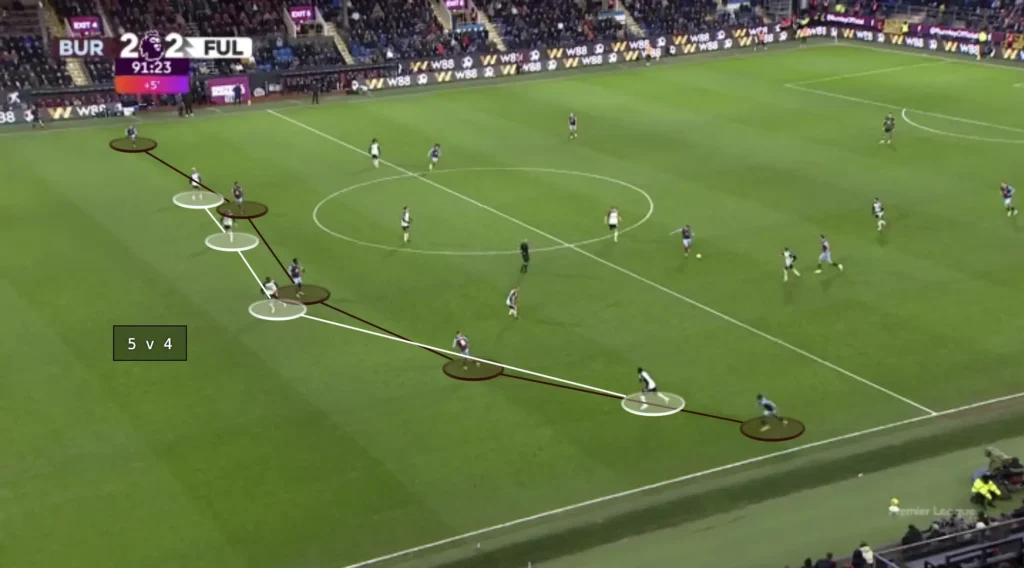
When the defending team is positioned on one side, the weak-side fullback becomes vulnerable to the long switch of play due to the 1v2 against Burnley’s winger and attacking midfielder. Kompany’s team often capitalizes on this by getting the ball to the winger and creating many opportunities from 2v1 situations on the wing and in the half-spaces.
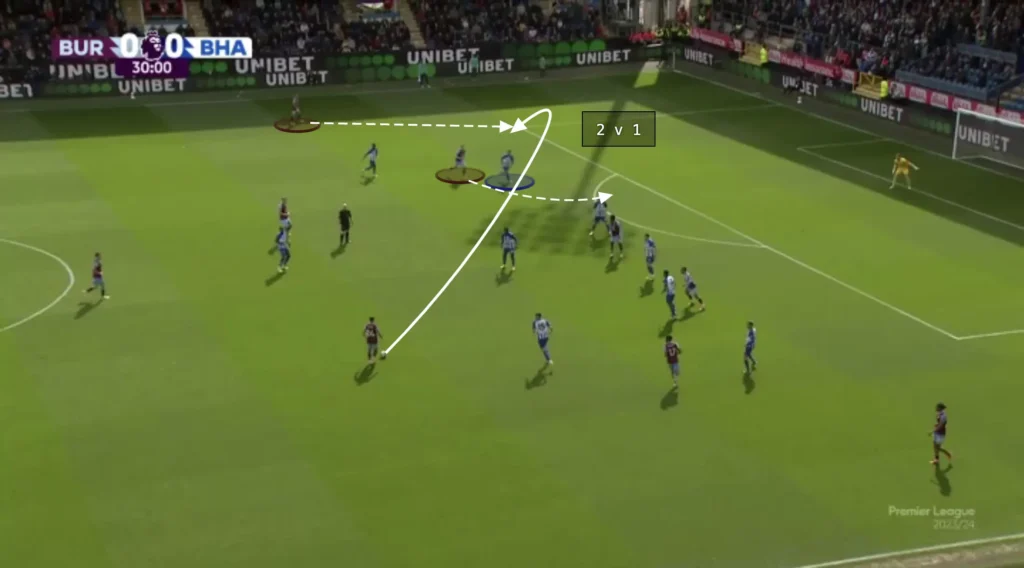
When playing with a 1-2-2-6 formation, the strikers and inverted wingers will become numerically superior against the opposition center-backs. This gives them good conditions to win long balls from the goalkeeper or the center-backs. Even if the opposition plays with three central defenders, Burnley will be in a 4v3 numerical advantage and should win the first and second balls. From there, they will establish possession higher up the pitch and take control of the game more and more.
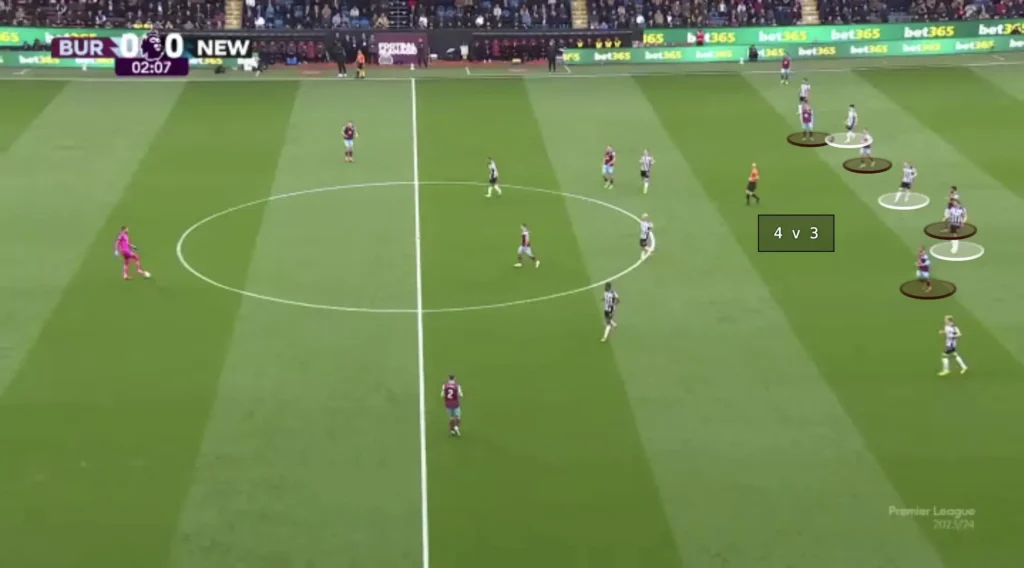
Final Third
Attacking the Half-Space
Kompany’s team has, throughout the season, looked to create chances by attacking the space between the opposition center-back and fullback. They primarily do this from the wide areas with underlaps from the attacking midfielders or sometimes the fullbacks.
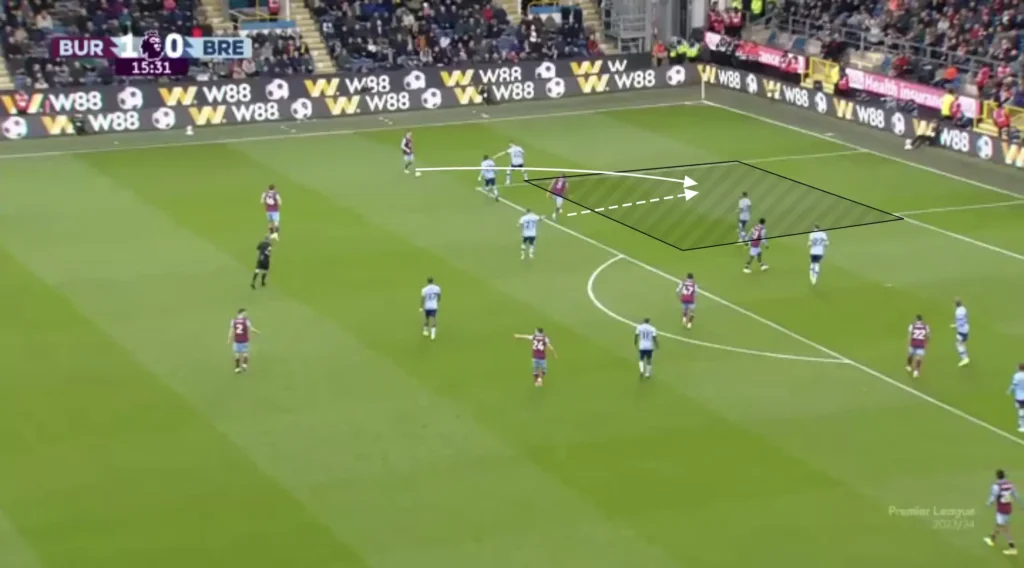
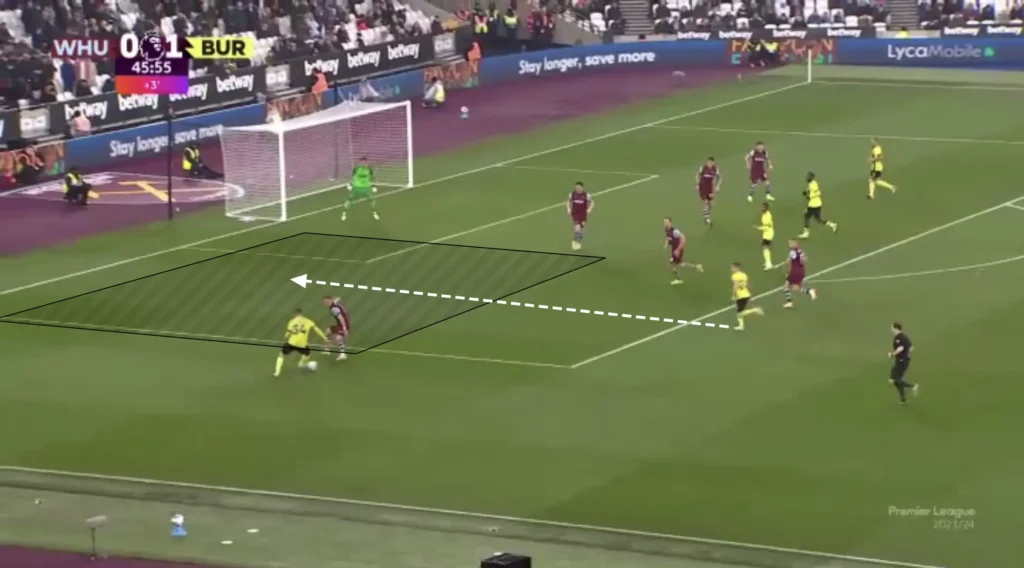
The winger can either play the ball to the underlapping player, who can cross to a teammate in the box, or take the ball inside to combine with an attacker or shoot.
Overlaps
Burnley have also used overlaps to produce opportunities in the final third. When the winger gets the ball, a Burnley player quickly makes the overlap, creating a 2v1 on the wing. If the opposition fullback drops to cover the overlapping run, the winger could cut inside, taking a shot or combining with a midfielder. If the fullback covers the center, the ball can easily be played to the overlapping player, creating a crossing opportunity.
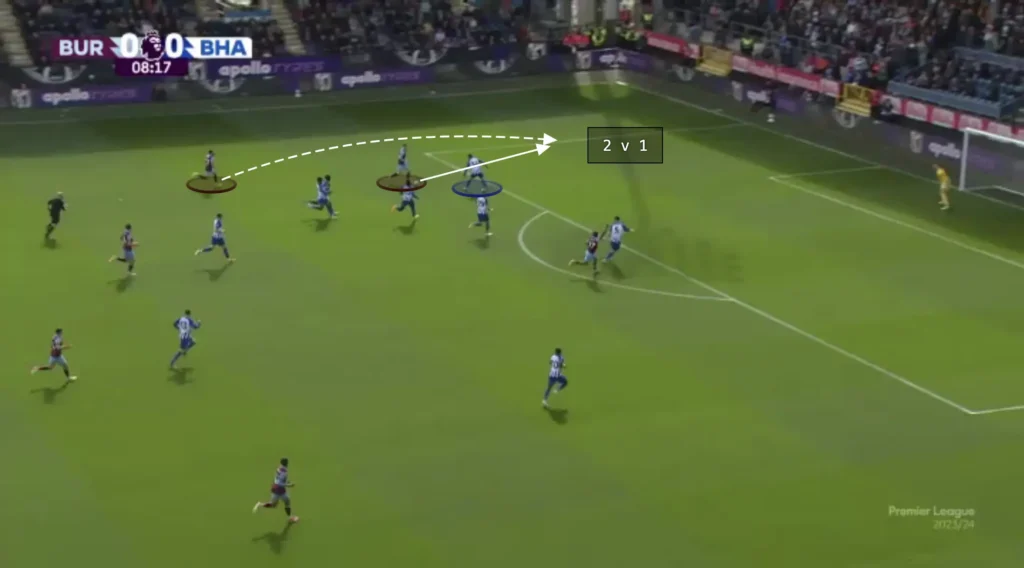
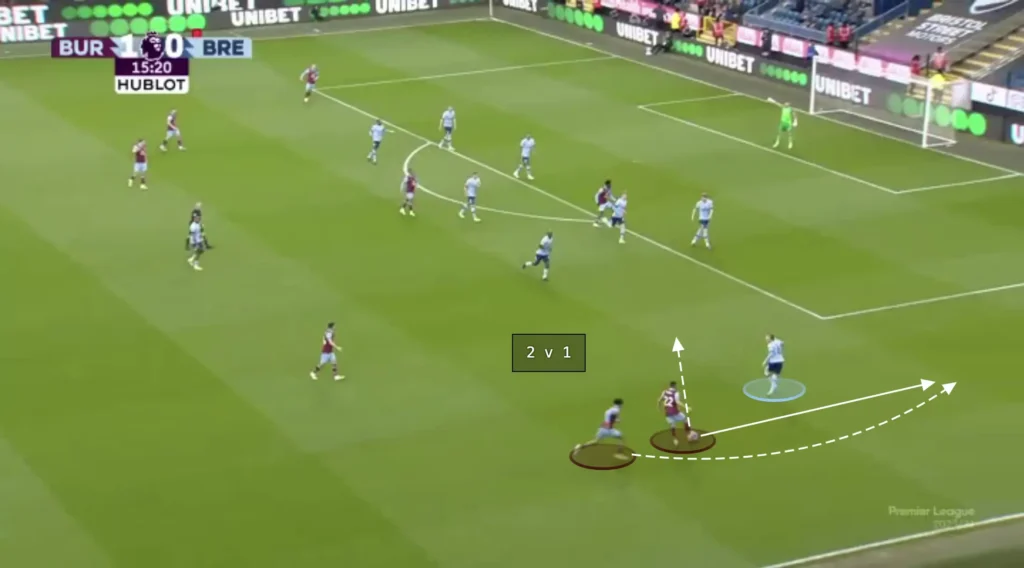
Many Players in the Box
The midfielders, wingers, and even fullbacks look to make runs into the box when the ball is in the final third, often getting four or five players into these areas to create overloads. The numerical advantages in the box force the defending team to make decisions and leave some players open.
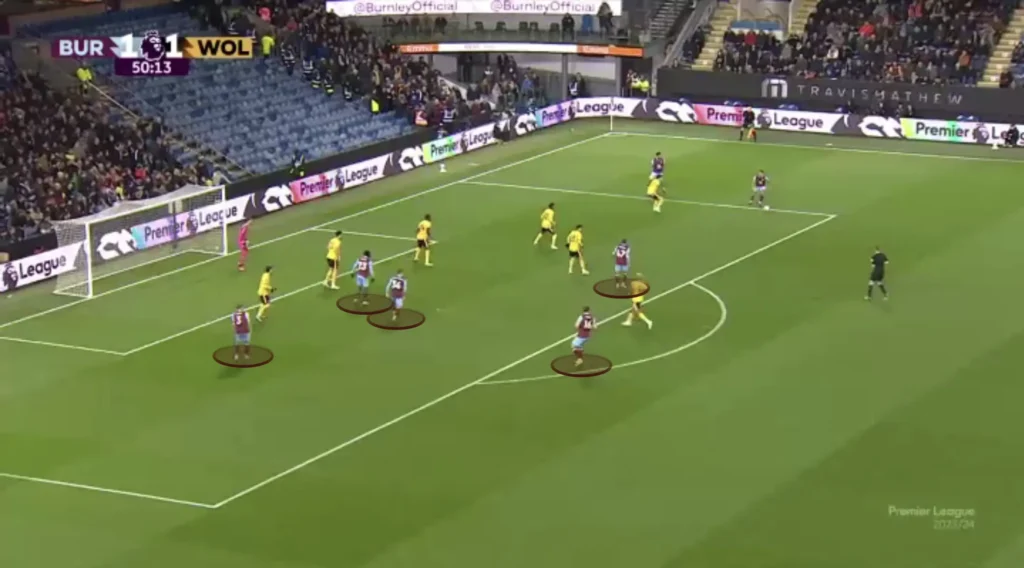
Kompany also positions many players outside the box, ready for the second balls and cut-backs. His team often successfully pushes down the opposition’s defense, opening the space in front of the backline. This season, Burnley have found their midfielders in these spaces, where they could shoot or combine with an attacker to create goalscoring opportunities.
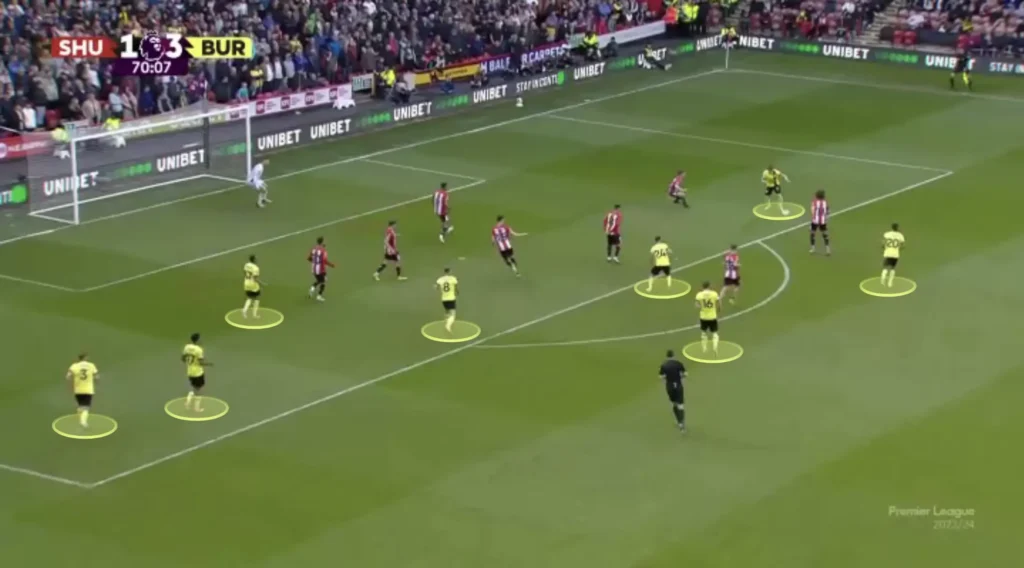
Defending
Man-to-Man
Kompany’s Burnley has defended in a man-to-man system all over the pitch. Everyone has an opposition player they are responsible for marking, which makes it difficult for the opposition to find open players. When defending man-to-man, the players must be good at defending 1v1 situations. If they are not and the opposition players win the 1v1 duels to get past their player, another player has to leave their marking, and the entire defensive structure collapses. Burnley’s defensive setup has arguably been their greatest attacking threat this season, scoring many goals from winning the ball when defending.
They use the man-to-man defending setup in both the high press;
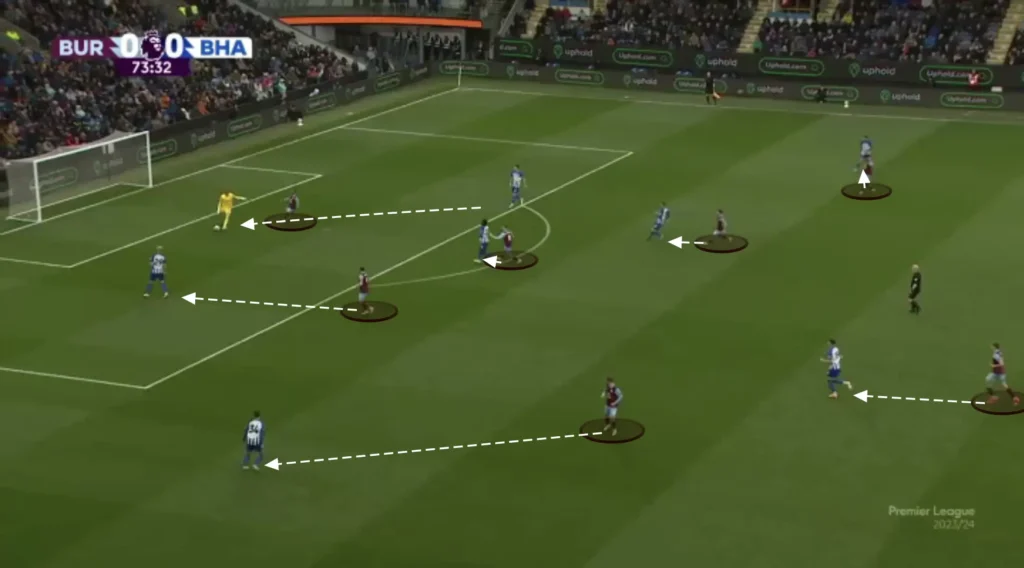
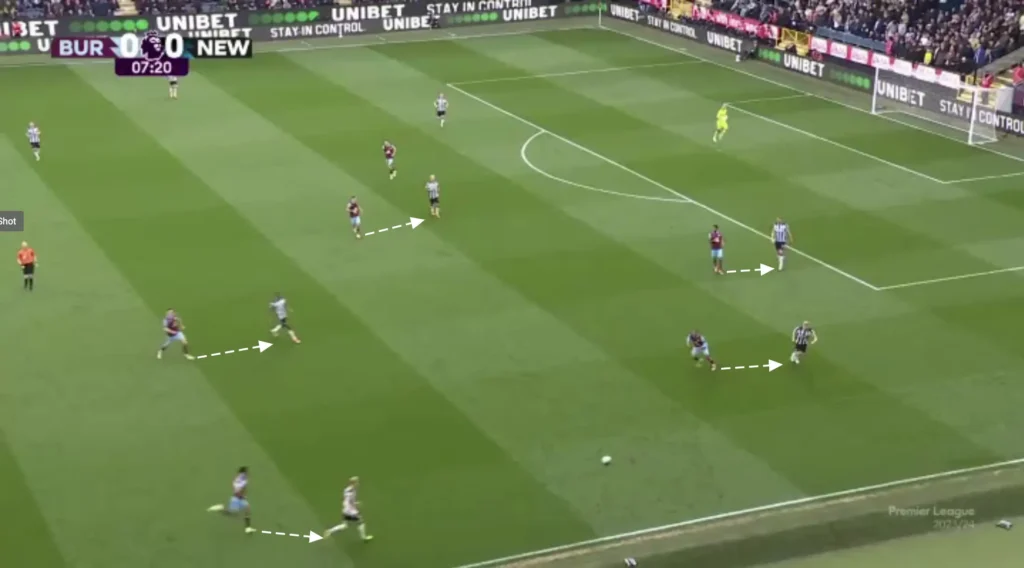
And in the lower press:
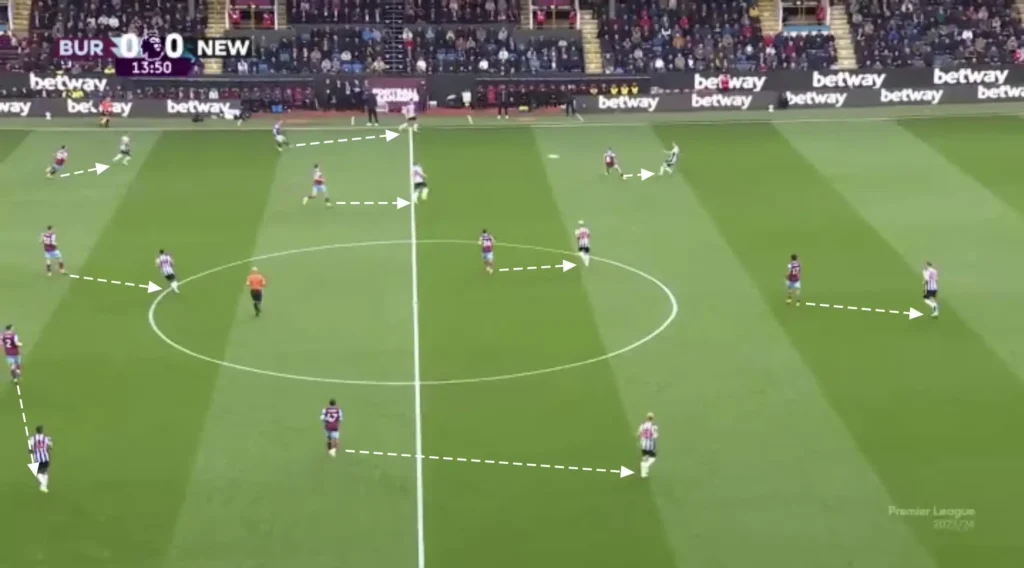
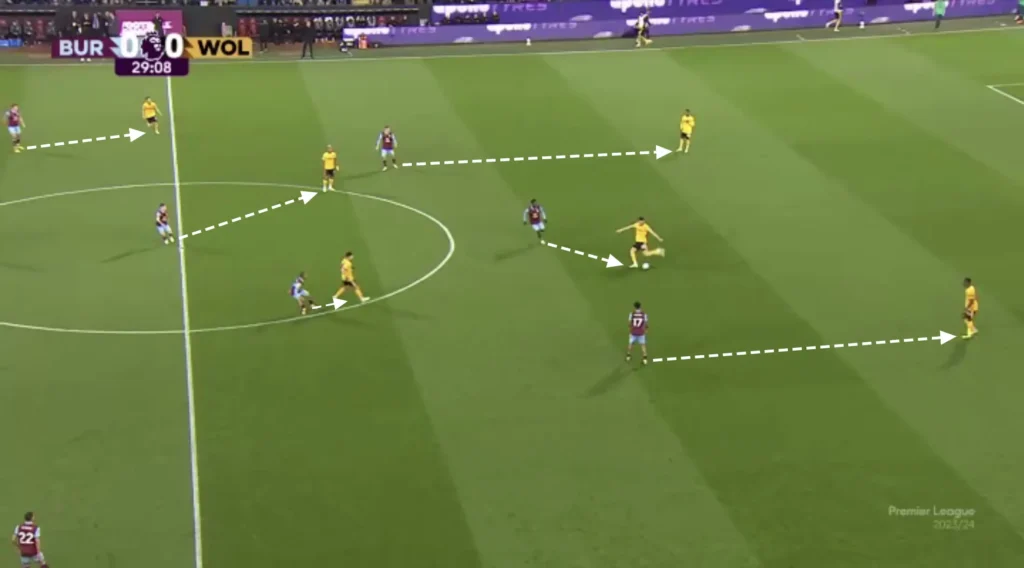
Distance Marking
In a man-to-man system, it becomes crucial that the players on the opposite side from where the ball is do not continue to mark the opponent they initially were responsible for. The pass from one side to the other is difficult to make, and the defender will have a lot of time to move across and win the ball if the pass comes. This means they do not need to mark their player as closely. They can instead come in and help create numerical superiorities in the center, decreasing the risk of dangerous 1v1 situations. The Burnley players will always have an opposition player they are responsible for, however, they will never be closer to them than they need to be.
Here, the Burnley forward and central midfielder have dropped, not being very close to the opposition player they are marking. They are, however, between them and the Burnley goal, meaning their opponent is not posing any immediate threats if they get the ball.
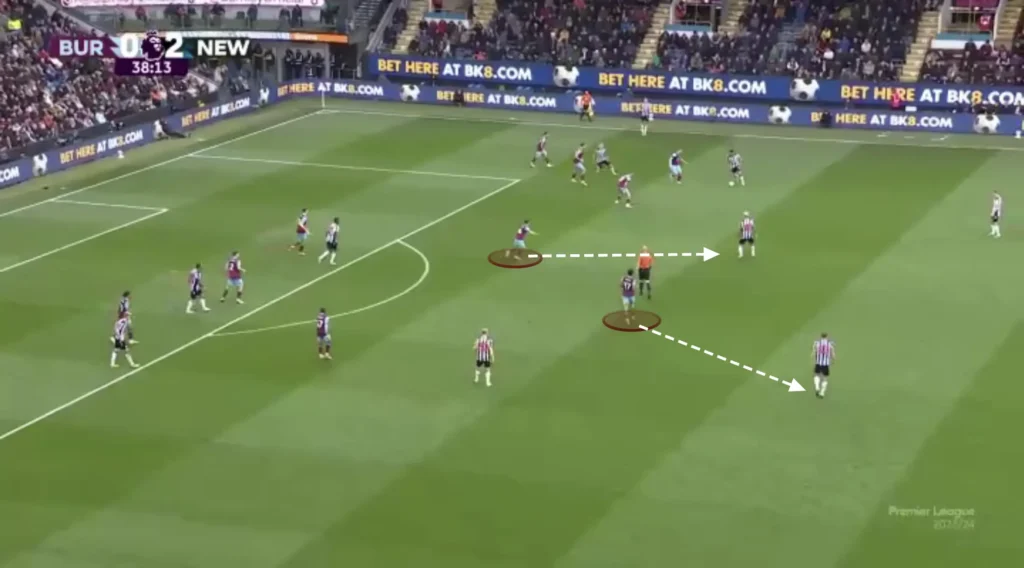
Squeezing the Pitch
Under Kompany’s guidance, Burnley have looked to squeeze the pitch when defending. This means constantly pushing the team up as much as possible. Every time the opponent plays a slow, sideways pass or a back pass, the Burnley player man-marking the opposition player who receives the ball pushes up. When this happens, the rest of the team has to follow to stay compact. When the next pass comes, the next player pushes up, forcing the opponent back even more. They do this because it forces the opponent further from the Burnley goal, making it harder to create chances.
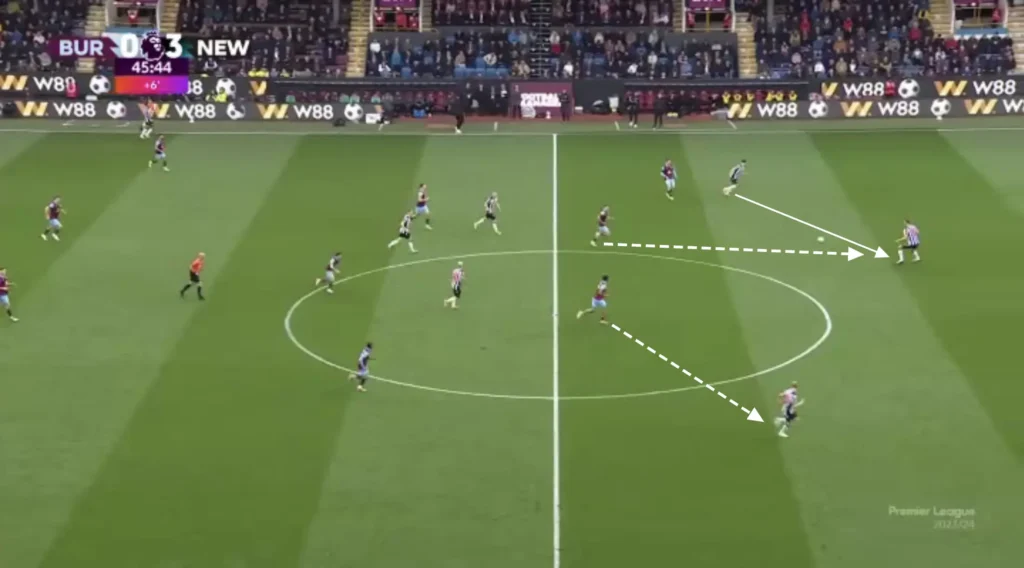
Transitions
Defensive Transitions
Positioning many players centrally, creating a numerical advantage in the midfield, creates good conditions in defensive transitions. Many players close to the ball after losing possession means that many players can work towards regaining possession. Therefore, Kompany’s teams often successfully regain possession directly after losing it.
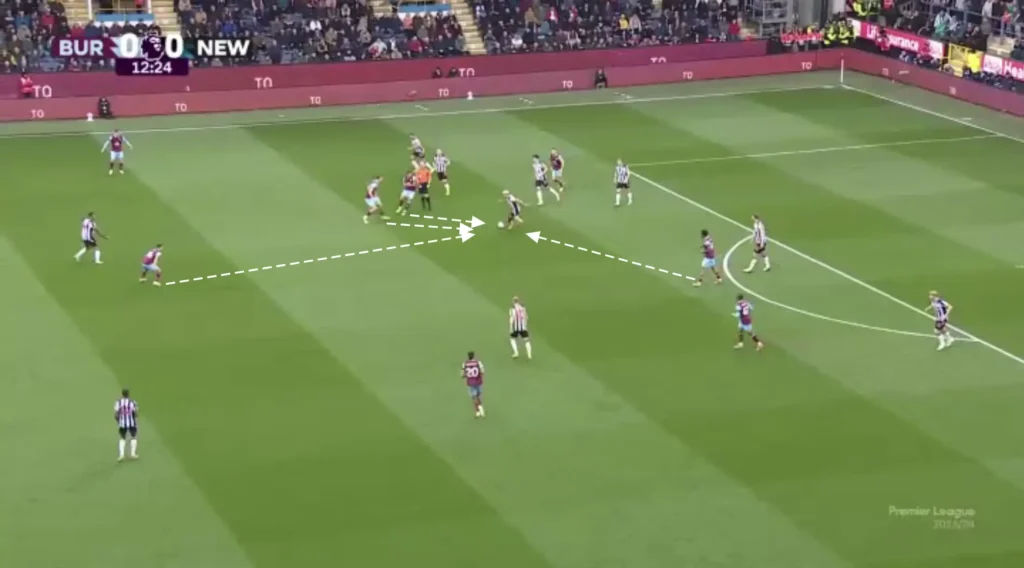
Offensive Transitions
Kompany wants his team to counterattack in their offensive transitions. They do this with a high tempo, mainly attacking the spaces between the center-backs and fullbacks. They often win the ball high up in the high pressure, and when they do, they immediately counterattack. In addition, due to the man-to-man system, they have many players high up when defending. This enables them to incorporate more players into the counterattacks.
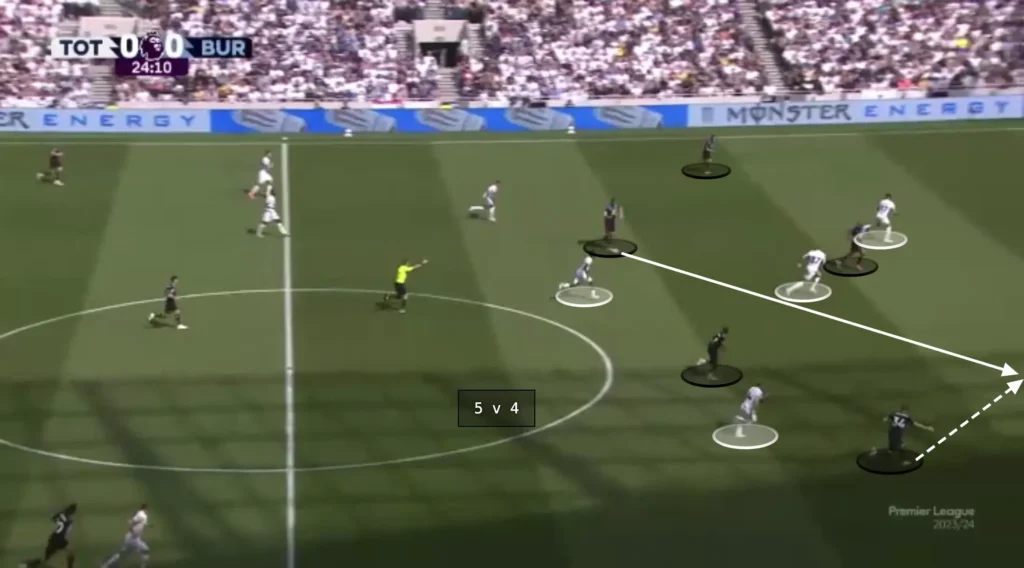
Final Thoughts
In conclusion, this tactical analysis of Vincent Kompany’s Burnley highlights a significant evolution in the club’s playing style under the former Manchester City captain. Kompany has introduced a dynamic and progressive approach, emphasizing possession-based football, strategic pressing, and a solid defensive structure. His innovative tactics have transformed Burnley into a more versatile and unpredictable team. This analysis underscores the impact of Kompany’s tactical understanding and ability to instill a new footballing philosophy in a team, paving the way for a future filled with strategic brilliance and competitive excellence.
